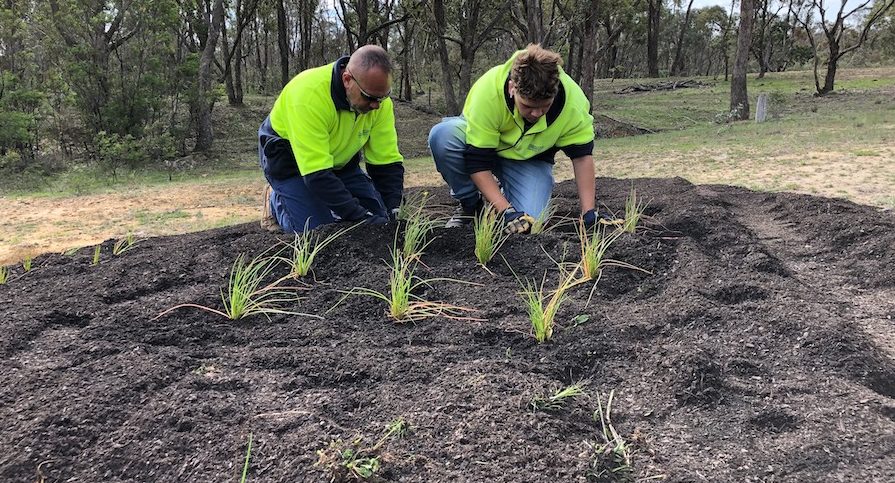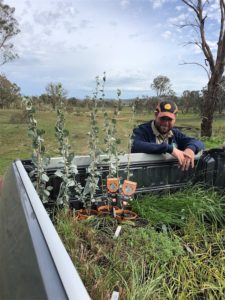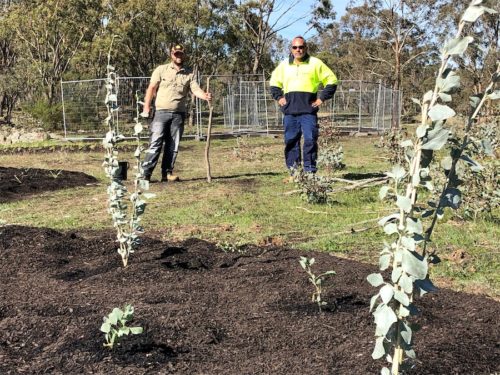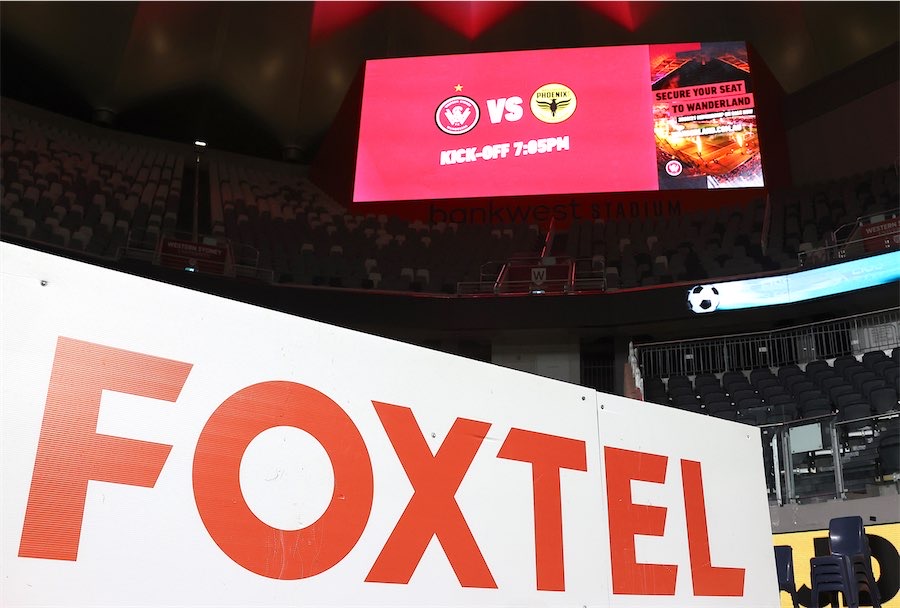
NGUNAWAL custodian, Tyronne Bell says that most people have no clue about the rich diversity of edible plants under their feet.
“Even in these uncertain times when a lot of people were panic buying European veggies, they probably had no idea that when they go for a walk they are probably looking at lots of bush foods. There’s plenty to eat!” he says.

Tyronne is the director of Thunderstone Aboriginal Cultural Services and recently worked with Wiradjuri custodian Adam Shipp to create an Aboriginal food garden at Goorooyarroo in the Mulligans Flat Nature Reserve.
They say they’ve created the first Aboriginal food garden in a nature reserve for at least a century, planting 1000 native plants, including hundreds of Aboriginal vegetables and grain plants such as chocolate lilies, vanilla lilies, murnongs, bulbine lilies, salt bushes, bluebells, native raspberries, and microlaena.
“Tyronne and I were keen to get the project going to bring back traditional food and showcase it,” says Adam, who specialises in indigenous plants and land management.
“Some of the food plants aren’t seen so much in the landscape now. We have brought back plants that had declined over the past 100 years,” he says.
Adam says that it was rewarding to be able to work “on country” and connect to the land, by bringing the plants back to the landscape.

“My passion is to educate people about plants and plant use, and why they are important to Aboriginal people and the environment,” says Adam.
The garden was funded by a grant from the Australian Government, via MP Andrew Leigh’s office in conjunction with SEE-Change, Murrang Earth Sciences and the team at Mulligans Flat Nature Reserve.
“It’s not about putting the plants in the ground and forgetting them. It’s about the wider community and Aboriginal people having the opportunity to learn about them, harvest them and eat them,” says Tyronne.
He says that he is looking forward to bringing groups to the garden in the future and once completed, the tourist centre will be a 1.5-kilometre walk from the garden site, making it a destination for people to discover.

Tyronne hopes that the food garden is the first of what will be many similar gardens on nature reserves across the ACT and is waiting to hear from the Chief Minister about this proposal. He says that demand for bush foods and medicines is huge and he would like to gain government support to further traditional land management practices.
“It’s important not only for Aboriginal people but for all Australians to know about our native plants and the food found in the bush, how Aboriginal people have used them for a long time. It helps to bridge gaps as food is a great way to bring people together, so it is important in that regard,” says Adam.
Who can be trusted?
In a world of spin and confusion, there’s never been a more important time to support independent journalism in Canberra.
If you trust our work online and want to enforce the power of independent voices, I invite you to make a small contribution.
Every dollar of support is invested back into our journalism to help keep citynews.com.au strong and free.
Thank you,
Ian Meikle, editor




Leave a Reply